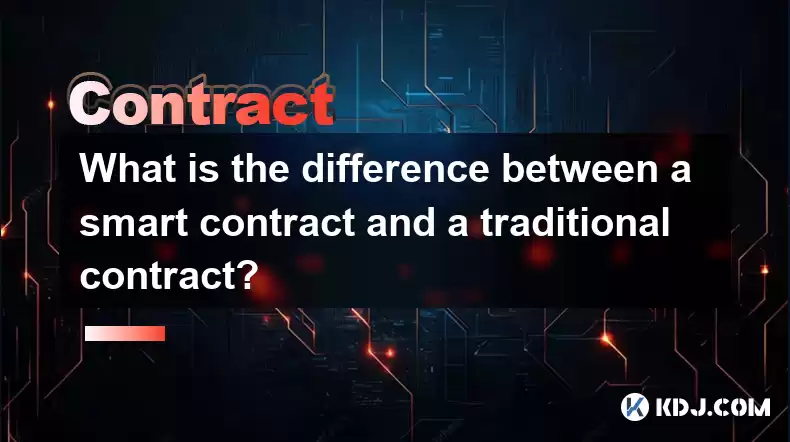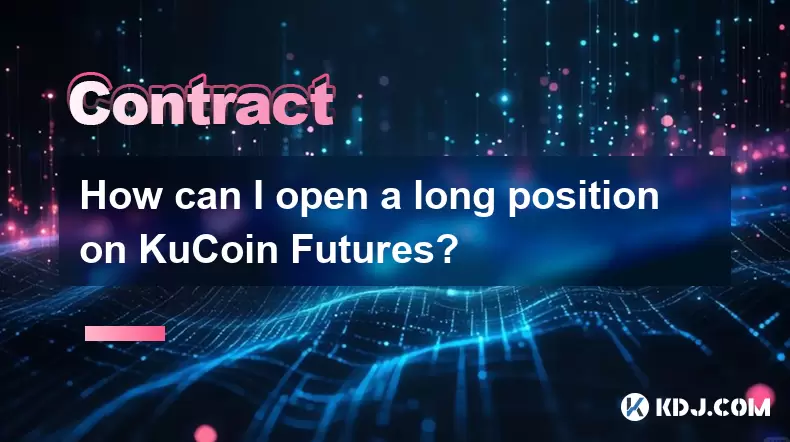-
 Bitcoin
Bitcoin $116700
0.24% -
 Ethereum
Ethereum $3973
4.34% -
 XRP
XRP $3.283
7.68% -
 Tether USDt
Tether USDt $1.000
0.01% -
 BNB
BNB $789.8
2.27% -
 Solana
Solana $176.2
3.31% -
 USDC
USDC $0.9999
0.00% -
 Dogecoin
Dogecoin $0.2238
5.14% -
 TRON
TRON $0.3389
-0.51% -
 Cardano
Cardano $0.7907
4.03% -
 Stellar
Stellar $0.4527
10.02% -
 Hyperliquid
Hyperliquid $41.07
4.27% -
 Sui
Sui $3.794
1.77% -
 Chainlink
Chainlink $19.49
10.40% -
 Bitcoin Cash
Bitcoin Cash $580.9
0.74% -
 Hedera
Hedera $0.2617
4.32% -
 Avalanche
Avalanche $23.41
3.67% -
 Ethena USDe
Ethena USDe $1.001
-0.03% -
 Litecoin
Litecoin $122.4
1.38% -
 Toncoin
Toncoin $3.364
1.49% -
 UNUS SED LEO
UNUS SED LEO $8.988
0.37% -
 Shiba Inu
Shiba Inu $0.00001295
2.82% -
 Uniswap
Uniswap $10.62
5.75% -
 Polkadot
Polkadot $3.922
4.46% -
 Dai
Dai $1.000
0.01% -
 Bitget Token
Bitget Token $4.494
2.15% -
 Monero
Monero $268.0
-1.30% -
 Cronos
Cronos $0.1523
3.68% -
 Pepe
Pepe $0.00001127
4.43% -
 Aave
Aave $285.4
4.85%
What is the difference between a smart contract and a traditional contract?
Smart contracts, self-executing code on blockchains, automate agreement execution, contrasting with traditional contracts enforced via legal systems and intermediaries. This difference impacts enforcement, transparency, and trust mechanisms.
Mar 25, 2025 at 02:36 am

Key Points:
- Smart contracts are self-executing contracts with the terms of the agreement directly written into lines of code. Traditional contracts rely on intermediaries and legal systems for enforcement.
- Smart contracts operate on blockchain technology, offering transparency, immutability, and automation. Traditional contracts lack these features.
- Enforcement mechanisms differ drastically. Smart contracts automatically execute upon fulfillment of pre-defined conditions. Traditional contracts require legal intervention for disputes.
- Smart contracts are better suited for certain applications due to their automation and transparency, while traditional contracts remain necessary for complex or legally sensitive situations.
- The level of trust required differs significantly; smart contracts rely on code verification and cryptographic security, while traditional contracts rely on trust in the involved parties and the legal system.
What is the difference between a smart contract and a traditional contract?
The fundamental difference lies in how they are created, enforced, and the level of automation involved. Traditional contracts are legally binding agreements between two or more parties, documented on paper or digitally, and enforced through the legal system. They require intermediaries like lawyers and notaries to create, interpret, and resolve disputes.
Smart contracts, on the other hand, are self-executing contracts with the agreement's terms written into code and stored on a blockchain. This code automatically executes the agreed-upon actions when pre-defined conditions are met. No intermediaries are needed for execution.
Transparency and Immutability:
A key differentiator is the transparency offered by smart contracts. Because they reside on a public blockchain, all transactions and contract details are visible to anyone with access. This contrasts sharply with traditional contracts, which are typically private documents only accessible to the involved parties. Further, smart contracts benefit from blockchain's immutability. Once a transaction is recorded, it cannot be altered or deleted, providing a high level of security and preventing fraud.
Enforcement Mechanisms:
The enforcement mechanism is where the most significant difference lies. A traditional contract's enforcement relies on the legal system. Disputes are resolved through litigation, arbitration, or other legal processes. This process can be lengthy, expensive, and uncertain. Smart contracts, however, are self-executing. Once the conditions are met, the contract automatically executes, eliminating the need for external intervention in most cases.
Automation and Efficiency:
Smart contracts offer significant automation advantages. They can automatically transfer funds, release assets, or execute other actions without manual intervention. This automation reduces transaction costs, speeds up processes, and minimizes the risk of human error. Traditional contracts, in contrast, require manual steps and approvals at each stage, leading to delays and increased costs.
Suitability and Applications:
While smart contracts offer many advantages, they are not a replacement for all traditional contracts. Simple agreements, like escrow services or supply chain management, are well-suited to smart contracts. However, complex agreements involving nuanced legal considerations or requiring human judgment may be better handled with traditional contracts and legal frameworks.
Trust and Security:
The level of trust required also differs. Traditional contracts rely on trust in the parties involved and the integrity of the legal system. Smart contracts, on the other hand, rely on the security of the blockchain and the correctness of the code. Auditing smart contract code before deployment is crucial to ensure its functionality and security.
Complexity and Legal Recognition:
Smart contracts can be more complex to design and implement than traditional contracts, requiring specialized skills in programming and blockchain technology. Legal recognition and enforceability of smart contracts are still evolving and vary across jurisdictions. Traditional contracts benefit from a well-established legal framework.
Cost and Accessibility:
While smart contracts can potentially reduce transaction costs in the long run, the initial cost of development and deployment can be significant. This contrasts with traditional contracts, where costs are typically lower, although legal fees can accumulate quickly in disputes. Access to smart contract technology also requires a certain level of technical knowledge.
Flexibility and Adaptability:
Traditional contracts can be more flexible and easily adapted to changing circumstances through amendments and addendums. Smart contracts, once deployed, are generally immutable, although some mechanisms exist to allow for upgrades or modifications, often requiring consensus from all parties.
Data Privacy:
While public blockchains offer transparency, this can be a disadvantage in situations where data privacy is critical. Traditional contracts allow for greater control over the dissemination of information. Smart contracts on private blockchains offer a degree of privacy but may lack the decentralization and security benefits of public blockchains.
Common Questions:
Q: Can smart contracts replace lawyers entirely?
A: No, smart contracts are tools to automate certain aspects of agreements, but they don't replace the need for legal expertise in drafting, reviewing, and handling complex legal issues. Lawyers remain essential for understanding legal implications and ensuring contracts comply with applicable laws.
Q: Are smart contracts legally binding?
A: The legal enforceability of smart contracts varies by jurisdiction. While many jurisdictions are working to establish legal frameworks for smart contracts, their status as legally binding agreements is still under development in many places.
Q: What happens if there's a bug in a smart contract's code?
A: A bug in a smart contract's code can lead to unintended consequences and potentially breach the agreement. Thorough auditing and testing are crucial to minimize the risk of bugs. Depending on the nature of the bug and the jurisdiction, legal recourse may be available.
Q: Are smart contracts only used for financial transactions?
A: While often associated with finance, smart contracts have applications beyond finance. They are being explored in various sectors, including supply chain management, healthcare, voting systems, and digital identity.
Disclaimer:info@kdj.com
The information provided is not trading advice. kdj.com does not assume any responsibility for any investments made based on the information provided in this article. Cryptocurrencies are highly volatile and it is highly recommended that you invest with caution after thorough research!
If you believe that the content used on this website infringes your copyright, please contact us immediately (info@kdj.com) and we will delete it promptly.
- Coinbase, Cosmos, and dYdX: Navigating the Crypto Currents
- 2025-08-09 06:30:16
- BNB Price, Altcoins, and Predictions: What's the Buzz?
- 2025-08-09 06:30:16
- Crypto Presale Projects Primed for Gains in 2025: A New Yorker's Take
- 2025-08-09 06:50:15
- Ruvi AI: The Millionaire Maker Poised for a Price Spike?
- 2025-08-09 06:50:15
- Cold Wallet, CoinMarketCap, Cardano & XRP: Navigating Crypto's Next Big Wave
- 2025-08-09 07:10:15
- Hedera (HBAR) Price Surge: Market Cap Soars, What's Next?
- 2025-08-09 07:10:15
Related knowledge

What is the difference between realized and unrealized PNL on KuCoin?
Aug 09,2025 at 01:49am
Understanding Realized and Unrealized PNL on KuCoinWhen trading on KuCoin, especially in futures and perpetual contracts, understanding the distinctio...

How does KuCoin Futures compare against Binance Futures in terms of features?
Aug 09,2025 at 03:22am
Trading Interface and User ExperienceThe trading interface is a critical component when comparing KuCoin Futures and Binance Futures, as it directly i...

What is the distinction between mark price and last price on KuCoin?
Aug 08,2025 at 01:58pm
Understanding the Basics of Price in Cryptocurrency TradingIn cryptocurrency exchanges like KuCoin, two key price indicators frequently appear on trad...

What are the specific maker and taker fees on KuCoin Futures?
Aug 08,2025 at 08:28am
Understanding Maker and Taker Fees on KuCoin FuturesWhen trading on KuCoin Futures, users encounter two primary types of fees: maker fees and taker fe...

Can you explain the difference between cross margin and isolated margin on KuCoin?
Aug 09,2025 at 02:57am
Understanding Margin Trading on KuCoinMargin trading on KuCoin allows traders to borrow funds to increase their trading position beyond their actual c...

How can I open a long position on KuCoin Futures?
Aug 09,2025 at 02:07am
Understanding KuCoin Futures and Long PositionsOpening a long position on KuCoin Futures means you are speculating that the price of a cryptocurrency ...

What is the difference between realized and unrealized PNL on KuCoin?
Aug 09,2025 at 01:49am
Understanding Realized and Unrealized PNL on KuCoinWhen trading on KuCoin, especially in futures and perpetual contracts, understanding the distinctio...

How does KuCoin Futures compare against Binance Futures in terms of features?
Aug 09,2025 at 03:22am
Trading Interface and User ExperienceThe trading interface is a critical component when comparing KuCoin Futures and Binance Futures, as it directly i...

What is the distinction between mark price and last price on KuCoin?
Aug 08,2025 at 01:58pm
Understanding the Basics of Price in Cryptocurrency TradingIn cryptocurrency exchanges like KuCoin, two key price indicators frequently appear on trad...

What are the specific maker and taker fees on KuCoin Futures?
Aug 08,2025 at 08:28am
Understanding Maker and Taker Fees on KuCoin FuturesWhen trading on KuCoin Futures, users encounter two primary types of fees: maker fees and taker fe...

Can you explain the difference between cross margin and isolated margin on KuCoin?
Aug 09,2025 at 02:57am
Understanding Margin Trading on KuCoinMargin trading on KuCoin allows traders to borrow funds to increase their trading position beyond their actual c...

How can I open a long position on KuCoin Futures?
Aug 09,2025 at 02:07am
Understanding KuCoin Futures and Long PositionsOpening a long position on KuCoin Futures means you are speculating that the price of a cryptocurrency ...
See all articles

























































































